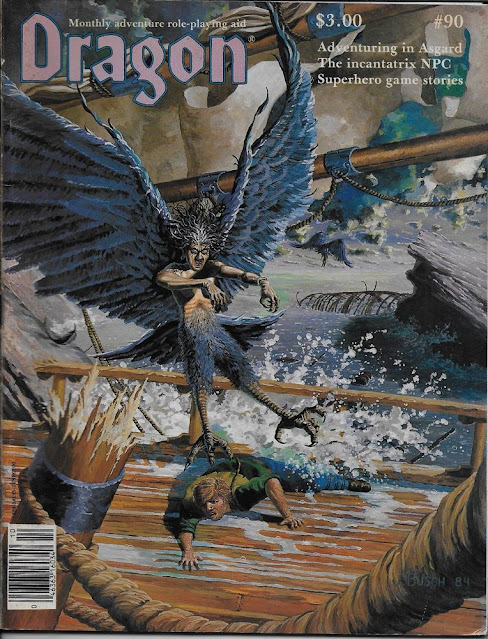Ages ago back in the Eighties when one of my groups were playing Advanced Dungeons & Dragons first edition we did a Viking themed campaign. And to boot this was a high level campaign. There were a few magic items among the party but on the whole was between 10th to 12th level. And we had a revolving door of six to nine players of ages 11 through 60 with two or three dungeon masters at the time. All of this had started because of Dragon issue # 90 and the who thing revolved around the Nine worlds. Roger E. Moore was the behind part of the madness with his article on 'Plane Facts on Gladsheim'. And his high level adventure Norse mythological 'Aesirhamar'. I'll say it before & I'll say it agian, Roger E. Moore doesn't get half the credit today that he deserves for his contribution to AD&D first edition. At the time we were being run through our paces with my uncle's campaign version of Der Ring des Nibelungen (The Ring of the Nibelung). So we were high level and cocky being kids. Were were about to get our lessons in humility really quick.
'Aesirhamar' isn't simply a simple adventure as much as it's a mythological AD&D mini campaign. We got our behinds handed to use time & again with many of the encounters in the adventure. Let's not mention the fact that several times the NPC's were the basis for lots of head aches for our group of faux Viking adventurers. Glaðsheimr itself became a head ache as well when certain gods were accidentally crossed & we had to go on a quest to redeem ourselves in Odin's eyes. The fact is that with higher level adventures there were more headaches which is as it should be within a sense. 'Aesirhamar' opened my eyes as a DM to the possibilities of high level adventures. And needless to say that Dragon magazine issue #90 led us into one of the longest running campaigns that we played going for almost five years of play. As PC's came & went we adjusted to the levels of play.

No comments:
Post a Comment
Note: Only a member of this blog may post a comment.